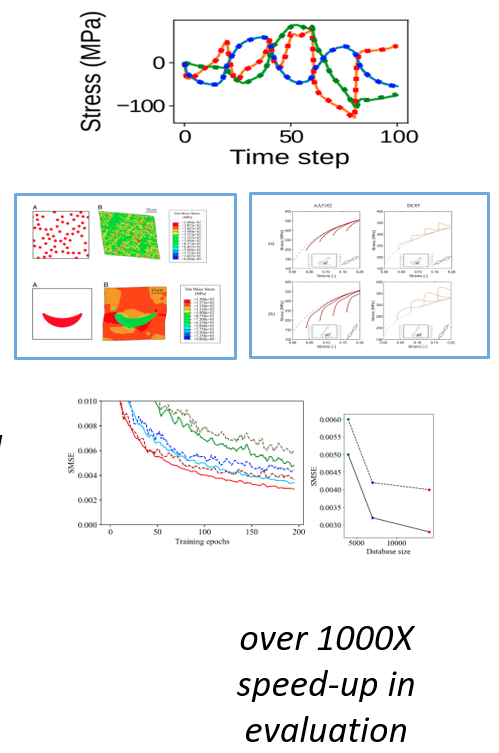One goal is to develop fast and accurate predictive simulation tools to enable design innovation. The quest for the inclusion of more physics at various length and temporal scales has made computational models too time-consuming for real engineering practice. For example, one high-fidelity FEM simulation of our double-sided incremental forming takes about 250 hours on a 72-core workstation while one forming experiment takes about 1 hour. A large portion of this computational time is to meet the need for accurately modeling the complex path-dependent plasticity behavior of sheet metal in order to predict the final shape and residual stress distribution in the part.
A new neural network architecture to overcome this challenge was proposed to predict the spatio-temporally dependent material behavior without explicitly assuming convexity or normality that are commonly used in mechanics. The work “Deep Learning Predicts Path-dependent Plasticity” was published in PNAS in December of 2019 and showed that complex phenomena such as distortional hardening can be predicted within 0.5% error with negligible computational time for computing material response once the network is trained. The train set was generated using simulations of representative volume elements subject to complex strain paths. The impact of this class of work can be tremendous as it offsets the computational cost to a one-time cost, and can then be used reliably in engineering design for an arbitrary geometry or even for various manufacturing processes or process chain. The approach is general, suitable for various materials, and can incorporate material microstructure at various scales.

- We show that finding plasticity constitutive laws of general materials is possible with unprecedented accuracy and efficiency
- Our data-driven approach captures both geometric- and model-induced phenomena in plasticity
- Our results indicate that the trained model can comfortably reach under 0.5% scaled mean-absolute-error (SMAE) while being trained on reasonable sized computational (or experimental) databases.
- The trained models are fast to evaluate without the need for iterative-solution schemes such as Newton–Raphson.
See our publications > AI-enabled for details.

